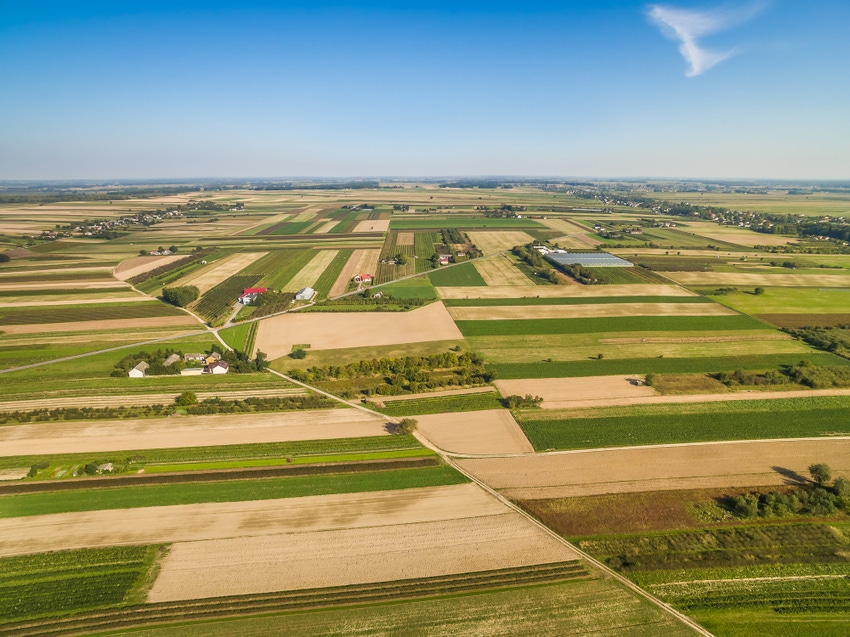
Commodity groups would like to keep several farm bill programs, including risk management, crop insurance, conservation
Both the U.S. Senate and the U.S. House have held several hearings and listening sessions during 2017 regarding the next farm bill. The U.S. House is targeting to pass a new farm bill by the first few months of 2018, while the U.S. Senate has not yet set any timetables, but has pledged to complete the farm bill in 2018. The current bill expires on Sept. 30, 2018, so the 2018 crop year will be the final year under the current bill, unless there is an extension beyond 2018.
The last 5-year farm bill was completed in 2013-2014, and commenced with the 2014 crop year. The current bill was written and enacted during a period of relatively high grain prices, compared to long-term average prices, or in contrast to prices in most years since 2014. Due to the declining price levels for some commodities, there were substantial ARC-CO payments on some crops in selected areas of the U.S. in recent years. As the ARC-CO program has progressed since 2014, the areas receiving payments and the level of ARC-CO payments has decreased each year, due to lower benchmark prices each year for most crops, as well as above-average crop yields in many areas of the Upper Midwest. The next farm bill will be written during a period of much lower commodity prices, and with the likelihood of very tight profit margins in crop production for the next few years.
Following is a summary of some of the potential programs and provisions being considered for the next farm bill.
Commodity programs
There has been lot of concern over the payment calculations in the current county-based Ag Risk Coverage (ARC-CO) farm program option, which over 90 percent of the corn and soybean producers in the Upper Midwest are enrolled in for 2014-2018. The ARC-CO payments for a given crop in a crop year can vary widely from county-to-county, due to the payment calculation formula.
By comparison, the price-only Price Loss Coverage (PLC) program is quite simple to understand, and only makes payments when the actual national market year average (MYA) price for a given crop falls below pre-established target prices for a crop. There were significant PLC payments for the 2016 crop year for producers that were enrolled in the PLC program for wheat and corn.
Most ag groups favor keeping a choice between the revenue-based ARC-CO program and the PLC program, but would like to see some tweaks to the ARC-CO payment calculation formulas. Those tweaks would include taking away some of the large variations from county-to-county for ARC-CO payments in a given year, and possibly using more years to calculate benchmark yields and prices, in order to reduce the wide swings in the benchmark revenue levels from year-to-year.
Others are pushing to have higher target prices for the ARC-CO program than for the PLC program, in order to make the ARC-CO program more attractive. As it stands now, with the current ARC-CO payment formulas and benchmark calculations, and the current PLC target prices, there will probably be a big switch by Midwest corn and soybean producers from the ARC-CO program to the PLC program in the next farm bill. Cotton producers are also pushing for major changes to the cotton program in the next farm bill.
Crop insurance
Many farm operators and ag lenders are concerned about the future of the federal crop insurance program, which is probably the best risk-management tool available to crop producers. The federal government currently covers approximately 60 percent of the premium cost paid by farmers for most common levels of crop insurance coverage. Some members of Congress have advocated to reduce the maximum federal premium subsidy to $40,000 per farm operation and to eliminate the popular harvest price option (HPO) for crop insurance, which is utilized by most Midwest corn and soybean producers. In addition, there have been proposals that would eliminate federal crop insurance coverage to any farm operation that exceeds $500,000 in adjusted gross income (AGI). If these changes were implemented, it could drastically change the federal crop insurance program as we know it today for many crop producers, which could add more risk to crop production.
Conservation programs
The Conservation Reserve Program (CRP), which has been the cornerstone of USDA conservation efforts since the late 1980s, continues to have strong support from ag organizations, as well as from wildlife, conservation and environmental groups. The maximum acreage in the CRP was reduced to 24 million acres in the 2014 Farm Bill, with 23.4 million acres currently enrolled in CRP, as of Sept. 30, 2017. The CRP enrollment was 29.5 million acres in 2012, and was 33.6 million acres in 2001. Many groups are calling for an increase in CRP acreage up to 28 or 30 million acres in the next farm bill. The biggest challenge with increasing CRP acreage is the cost of the program in an era when Congress is trying to reduce the federal budget deficit. The 33.6 million CRP acres in 2001 required an annual total federal budget outlay of $1.6 billion, while the 24 million CRP acres in 2017 required an annual budget outlay of over $1.8 billion.
Nutrition title
Some members of Congress would like to separate the Food and Nutrition Title, which funds the Supplemental Nutrition Assistance Program (SNAP), from the Commodity Title when the next farm bill is written. SNAP, which utilizes approximately 70-80% of the funds expended under the farm bill, has been a way to engage both urban and rural members of Congress on the importance of this legislation. For many decades farm bills have contained both the Commodity and Nutrition Titles, and experienced ag policy experts warn that funding for ag commodity programs could become much more difficult in the future if the farm programs and SNAP are separated.
Other USDA programs
There are twelve titles in the current farm bill, which includes trade programs, rural development, ag research, the dairy margin protection program and organic production, in addition to the other programs mentioned. Many supporters of these other programs are also advocating for increased funding in the next farm bill.
One of the overriding issues for Congress and the Administration will be to find a balance between the many needs and priorities for the next farm bill with the growing federal budget deficit. Many of the proposals for commodity programs, conservation and other farm bill titles require additional federal funding allocations over the next decade, which may be a tough sell while Congress is looking for ways to reduce federal spending.
If a new farm bill is not completed by mid-year of 2018, it increases the likelihood that the current farm bill could be extended for at least one additional year, which would likely include the 2019 crop year.
About the Author(s)
You May Also Like






